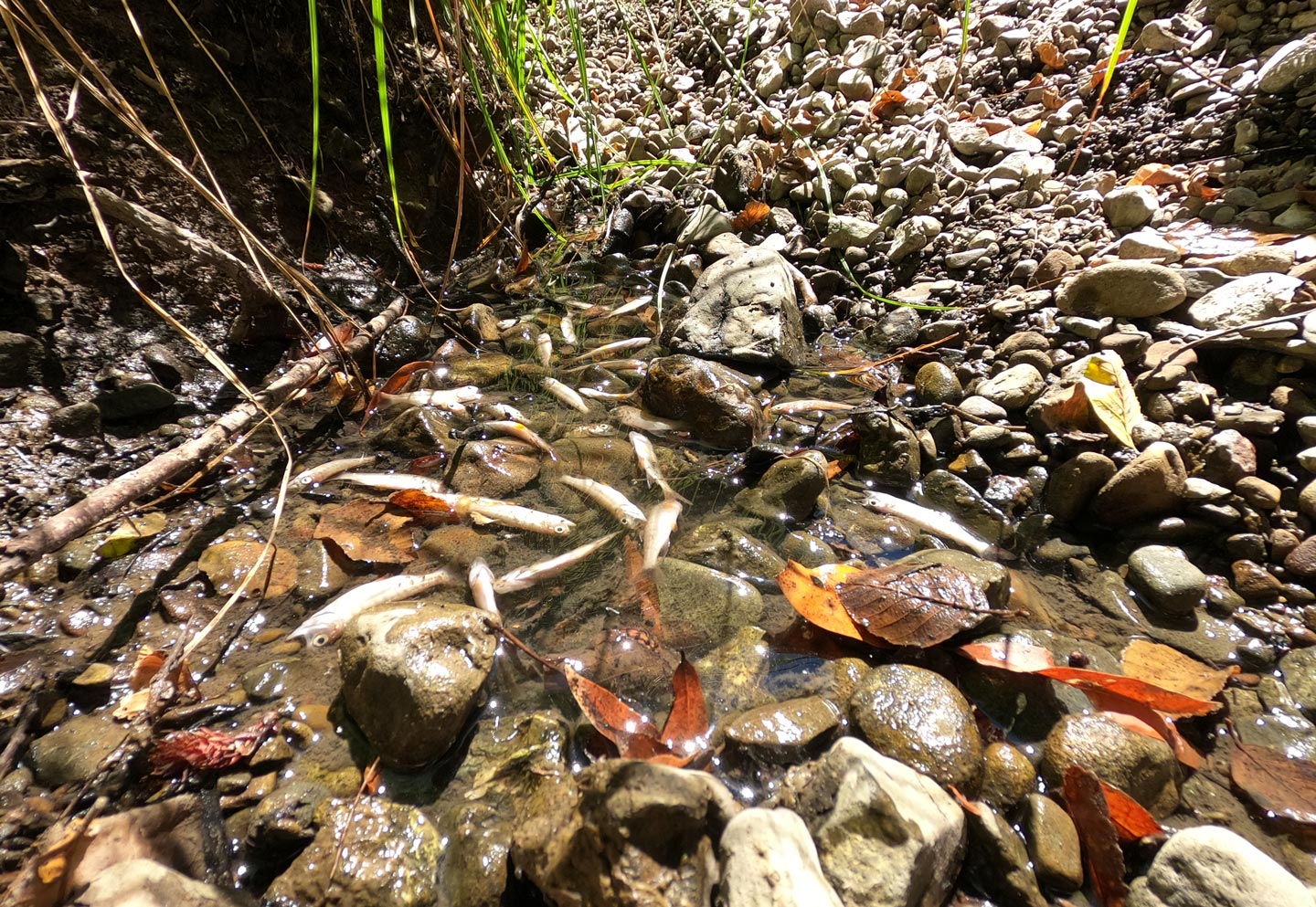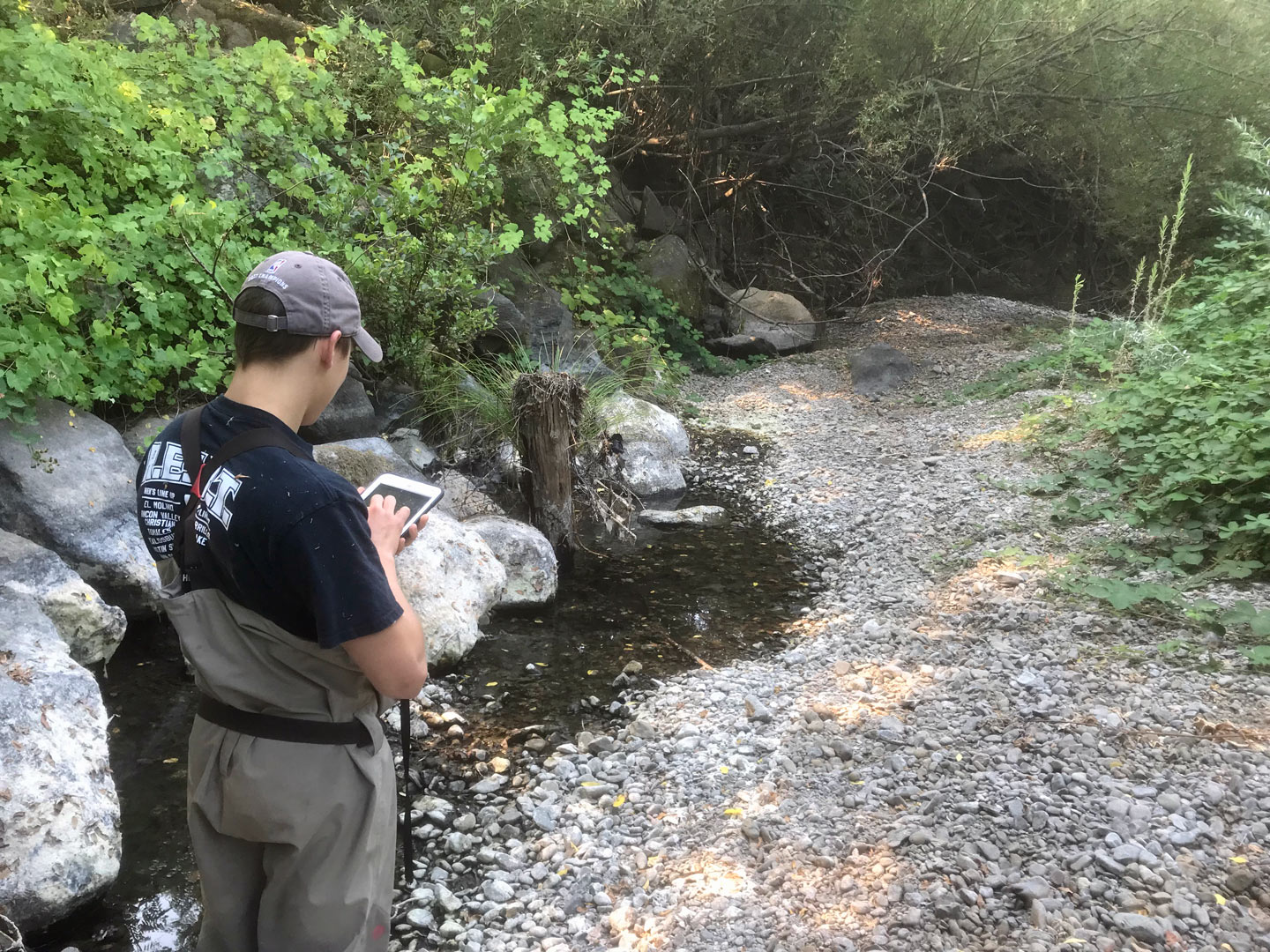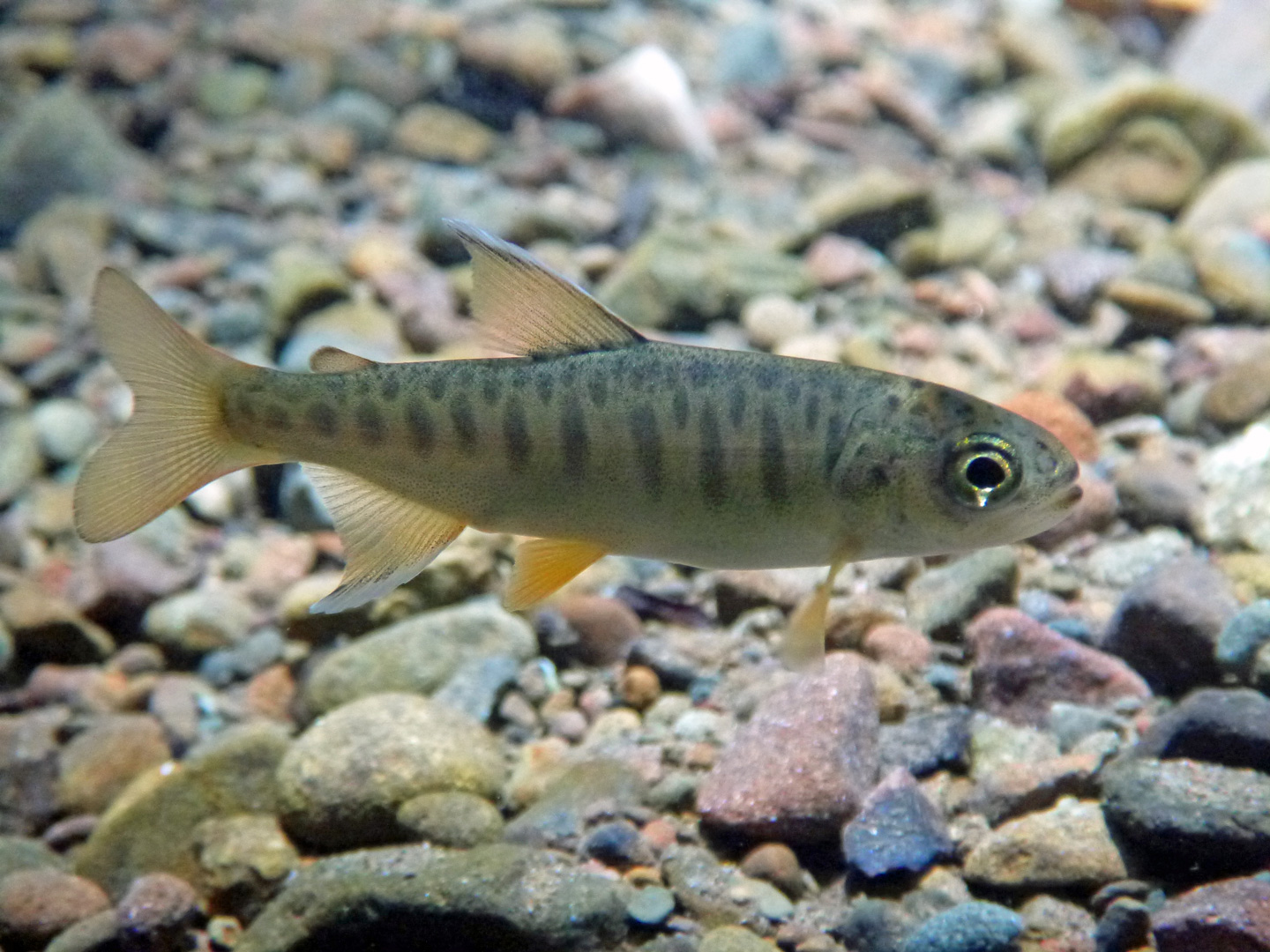Drought impacts
Insufficient summer streamflow is a significant limiting factor to recovery of Russian River salmonid populations. Drought is becoming more frequent and intense in our region. See this slideshow for an overview of 2021 drought impacts to Russian River salmon and steelhead.
Wetted habitat mapping
By late summer, many of the stream reaches where juvenile coho and steelhead are rearing become intermittent or dry, leading to high mortality rates.
We are documenting the impact of stream drying and flow impairment on salmonids by mapping the wetted habitat available to fish during the driest time of year and overlaying the resulting maps with the same year's fish distribution data. This allows us to calculate the proportion of the habitat where redds and juvenile fish were observed that remained wet through the dry season, dried completely, or became intermittent.
We created this story map to describe the process and the 2020 season outcomes. Of over 120 miles surveyed in 45 streams in 2021, only 51% of instream habitat remained wet by late summer.
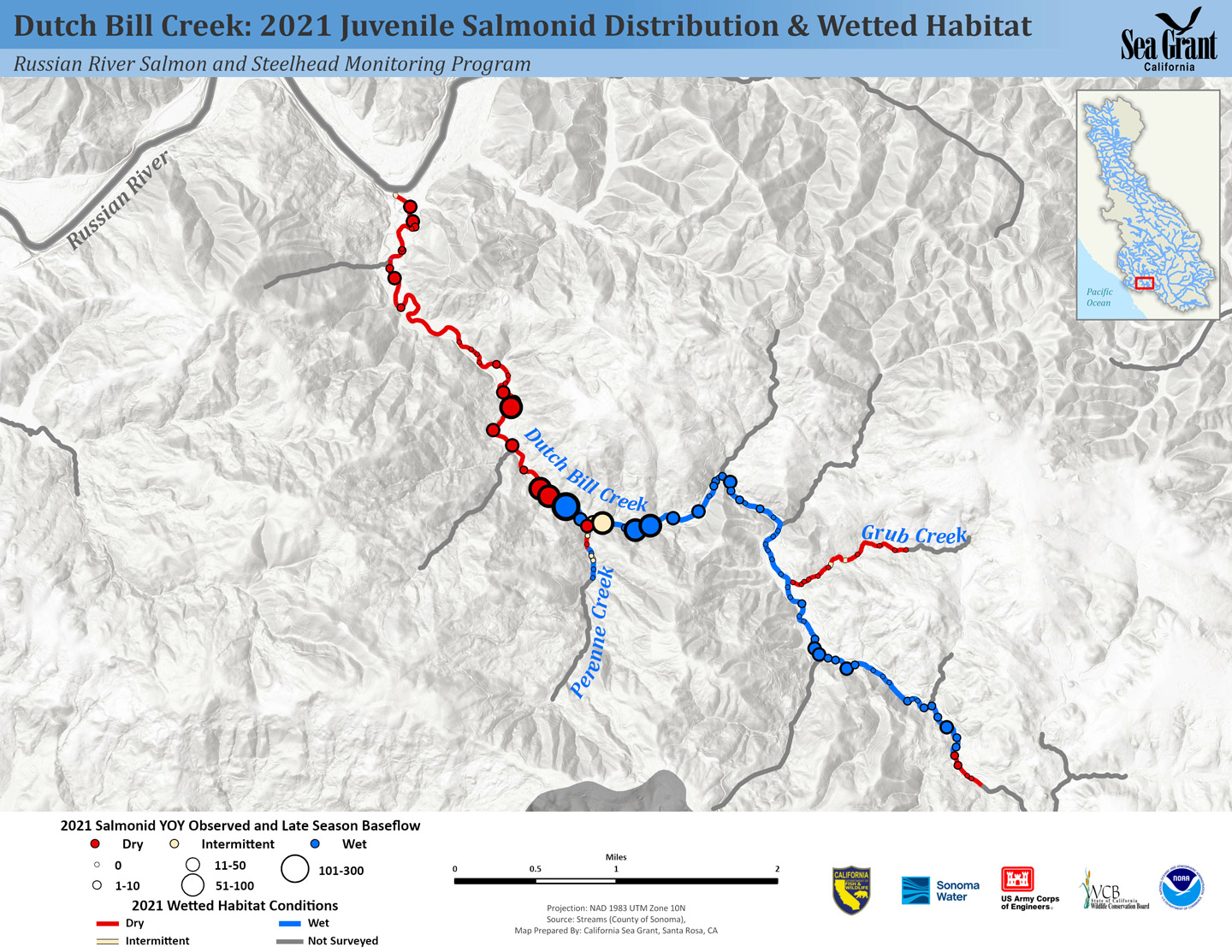
Dutch Bill Creek map of juvenile snorkel counts from early summer overlaid with September habitat conditions. Circles correspond to the number of fish seen in each pool and line color indicates where the channel remained wet (blue), dried (red), or became intermittent (yellow).
In the peak of the previous drought in 2015, only 39% of the pools where juvenile salmon and steelhead were observed rearing remained wet through the dry season, on average across the 14 streams sampled. In the summer of 2021, just 30% of the habitat supporting rearing salmonids remained wet through the summer in those same streams.
Oversummer flow and coho survival
We conducted a long-term study to correlate flow and environmental conditions with oversummer survival of juvenile coho and found that the number of days that pools were disconnected from surface flow was the strongest predictor of fish survival, with survival decreasing the longer pools were disconnected. Through additional analyses, researchers at UC Berkeley confirmed that days of disconnection stood out as the most important predictor of fish survival, followed by percent cropland cover within the watershed and pool volume. Study outcomes were published in Transactions of the American Fisheries Society and Global Change Biology.
News: A little water makes a big difference for rearing salmon
Supporting streamflow enhancement efforts
California Sea Grant is a member of the Russian River Coho Water Resources Partnership. This collaboration, formed in 2009, works to improve streamflow for fish and water supply reliability for landowners in key coho salmon streams by partnering with landowners to develop projects to augment or forebear water during the dry summer months. Our role is to determine the impact of those projects on fish and their habitat, and to contribute to a better understanding of how streamflow and related habitat conditions are affecting fish. See the Partnership website for Russian River tributary Streamflow Improvement Plans, guidance documents on a wide array of topics, and more.
Our January 2022 meeting included presentations on the Partnerships' accomplishements and lessons learned over the past decade plus of National Fish and Wildlife Foundation-funded work, and featured an agency partner panel discussion on visions for the future of streamflow restoration in coastal California.
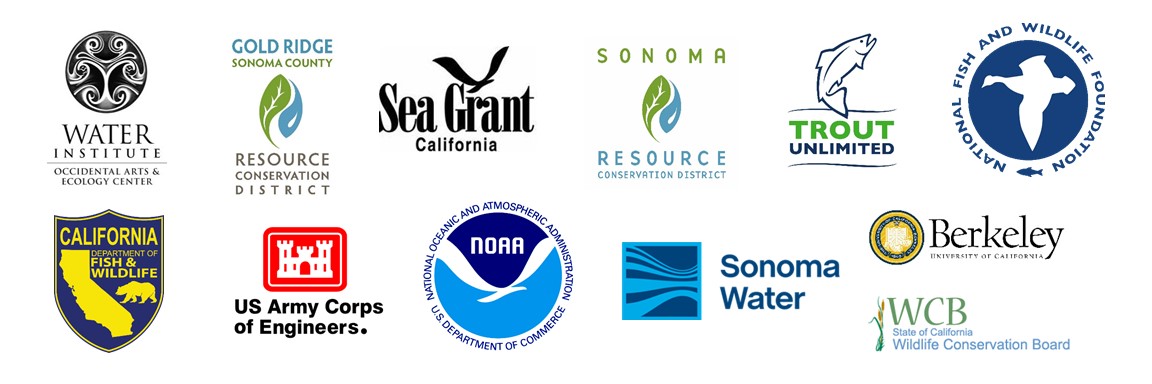
Research coordination
We held a series of annual meetings for the many partners working on streamflow-related research and restoration efforts in the region to share information and enhance collaboration. Meeting coordination was funded by the Wildlife Conservation Board. The following links contain presentations from the 2019 meeting and a video recording of the 2020 meeting.

